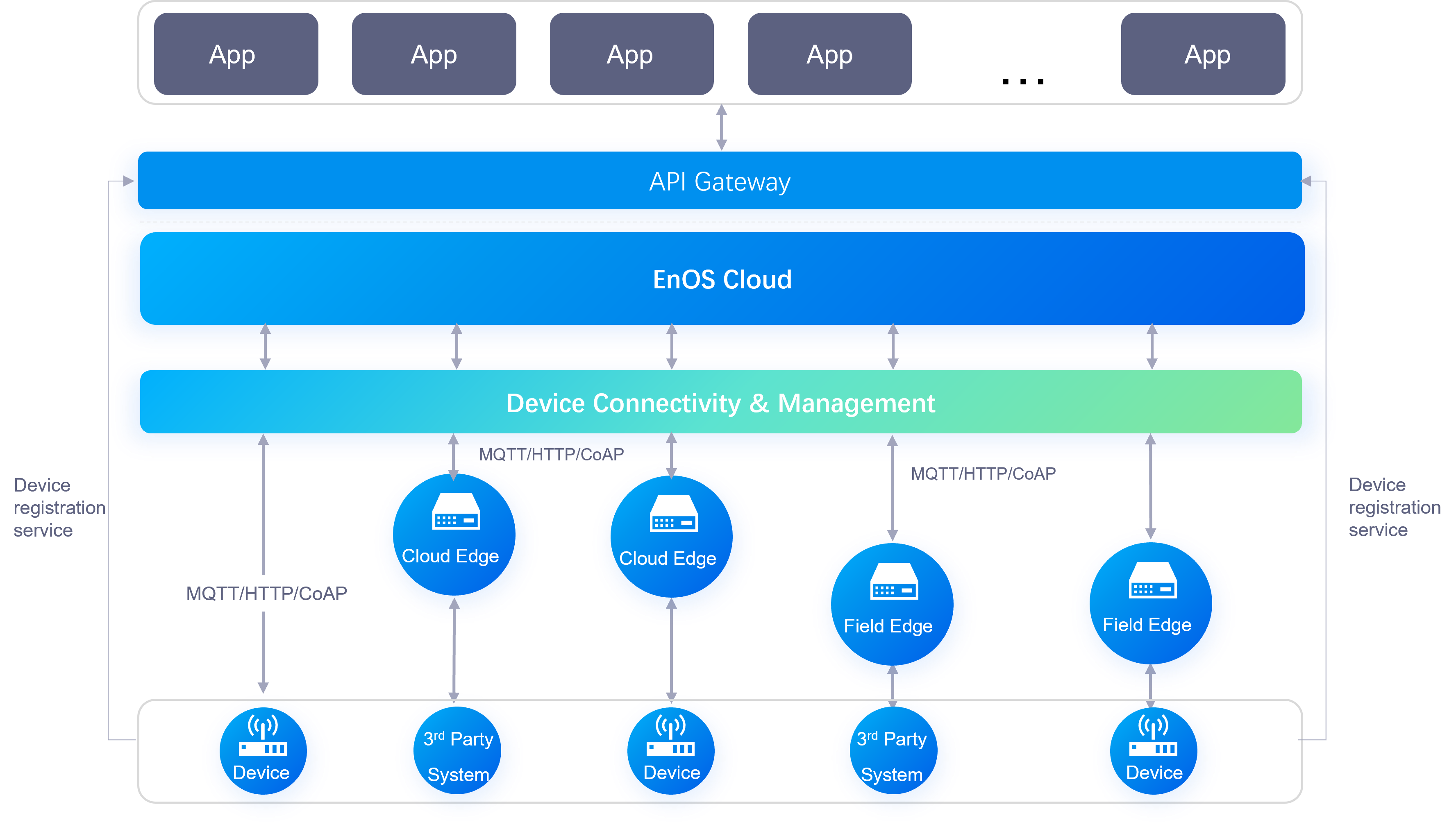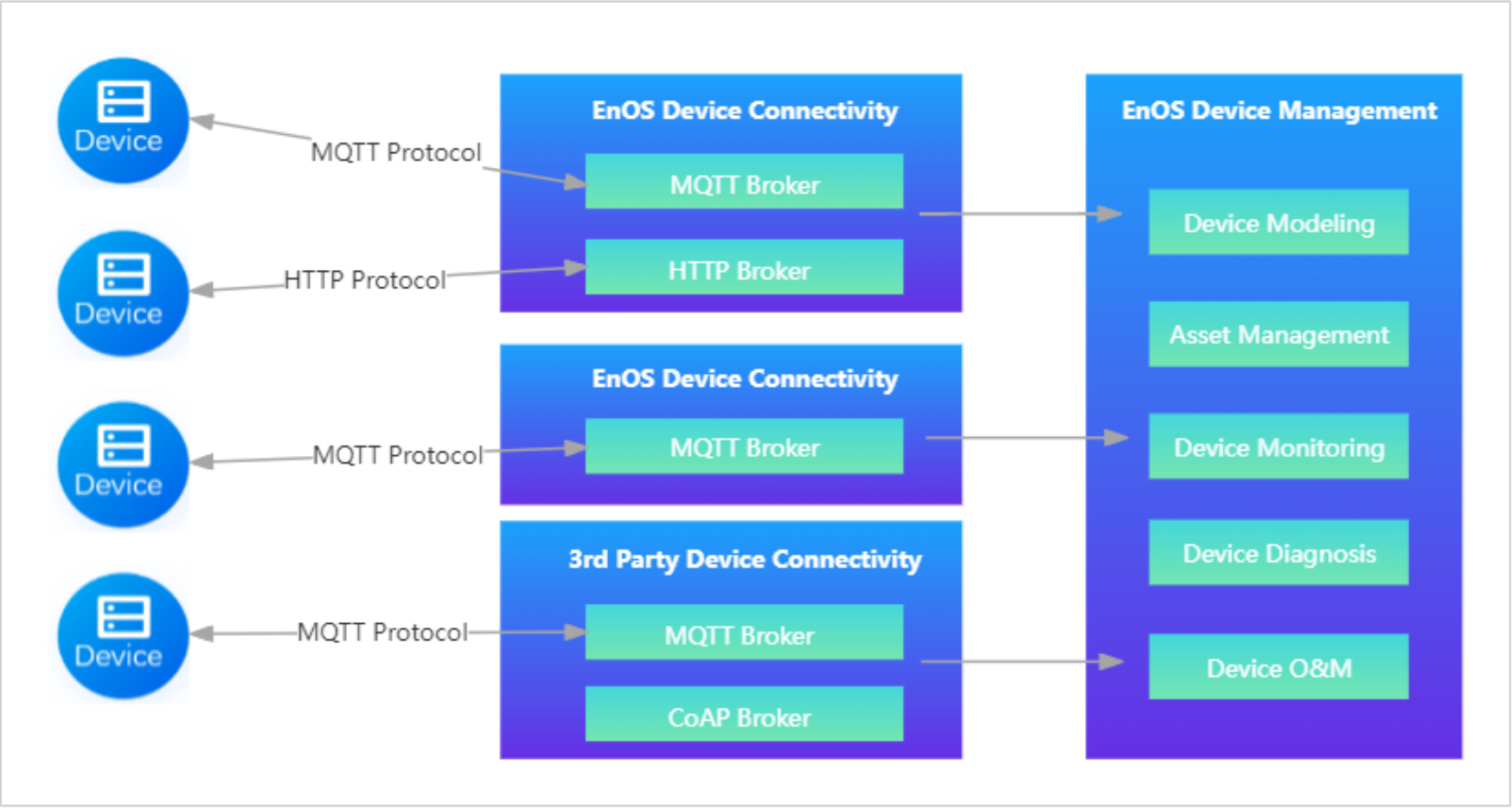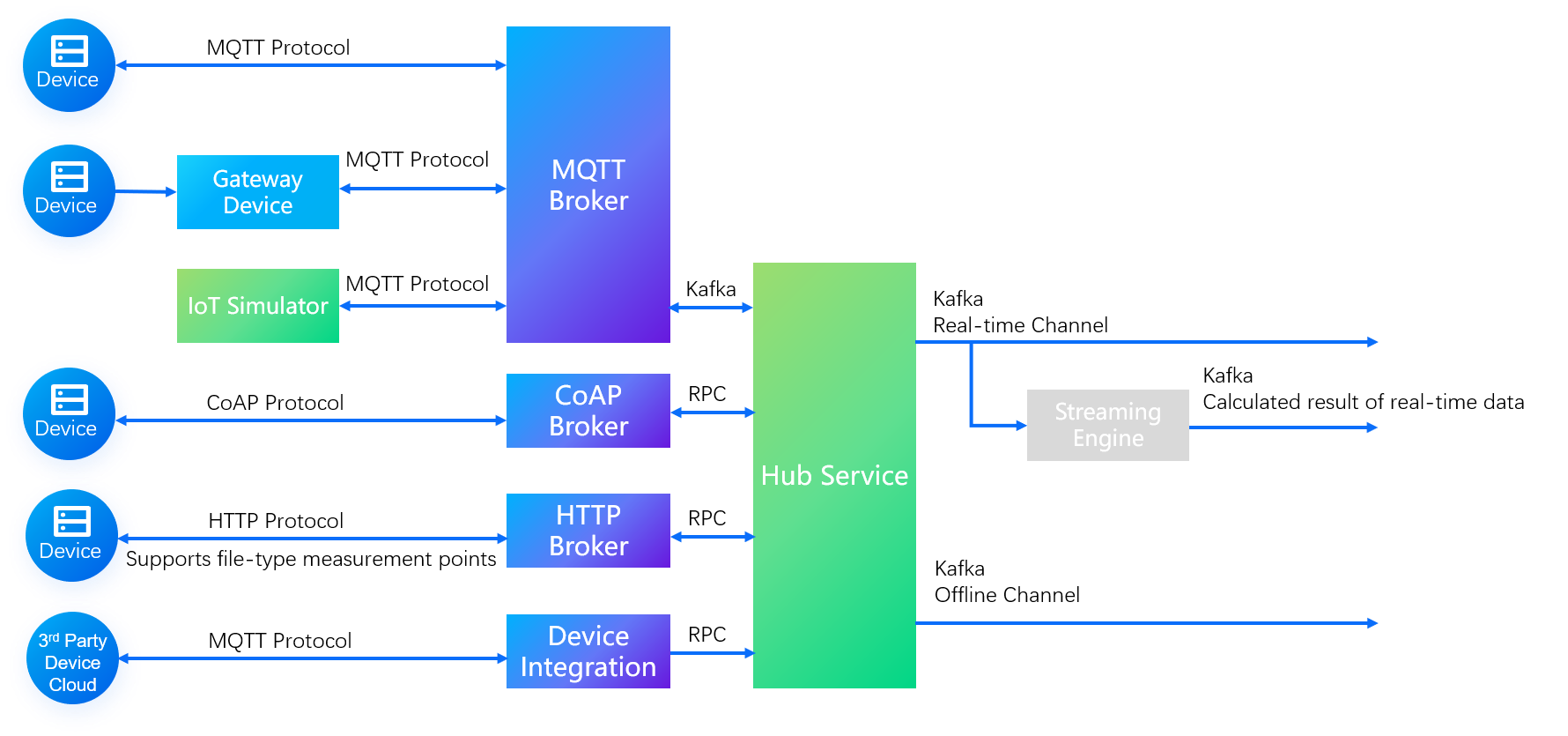Device Data Flow¶
As shown in the figure below, devices can connect directly or via a gateway to EnOS Device Connectivity and Management.
For directly connected devices, EnOS supports device access based on the MQTT and HTTP protocols.
For gateway devices, EnOS supports communication using the MQTT protocol.
For third-party systems, EnOS supports integrating historical messages based on the MQTT protocol and real-time messages based on the HTTP protocol.
If users do not have real devices, they can use the Device Simulator to create simulators that generate simulated data for connecting to EnOS Cloud, allowing concept validation.

Multi-Device Connection(DC)¶
Multi-Device Connection (abbr. DC) refers to the ability to source device connections from multiple heterogeneous origins while still uniformly leveraging EnOS device management capabilities for full lifecycle management.

As shown in the figure above, the multi-DC mode enables:
Expanded connection capabilities, making connection methods more flexible. DCs can be provided by EnOS or by third-party IoT hubs.
Support for failover mechanisms to ensure system performance and stability. When a DC requires version upgrades, scheduled maintenance, or encounters a failure, devices can switch to another DC for connection, ensuring uninterrupted device connectivity and data upload.
Establishment of different DCs for devices based on regions or business requirements, enabling isolated device management and risk diversification.
You can contact the system administrator to set up multiple DCs. Once configured, you can navigate to Operation Monitoring > Routing Manager in Developer Console of EnOS Application Portal to track the routing status of devices, allowing timely detection and diagnosis of overloaded or abnormal connections.
Data Normalization¶
After device data is ingested into EnOS, brokers for each protocol receive the data uploaded by devices based on their respective protocols. EnOS normalizes this data into standard data (attributes, measurement points, or commands) as defined in the model and sends it to Device Connectivity and Management.

Data Application¶
Device Connectivity and Management sends normalized data to EnOS Alert Engine as needed, which you can access through. You can also subscribe to these data streams on EnOS, and the data will be distributed to corresponding Kafka topics for use by EnOS Data Asset Storage Management:
Hot, warm, and cold data tiered storage for convenient access:
Redis real-time database offers fast read speeds and is used to store the latest data for all devices.
TSDB time-series database stores frequently accessed data by different measurement point types, with storage duration configurable by contacting the system administrator. You can query data stored in the TSDB database via TSDB Data APIs.
Archive database stores business data with low access frequency and high storage space requirements. For more information, see EnOS Data Archiving.
Configure data subscription tasks for applications through EnOS Data Subscription, proactively pushing time-series data, alert data, and more to applications. This eliminates the need for applications to continuously poll APIs, significantly improving data retrieval efficiency.
Monitor and alert on abnormal data via the EnOS Alert Engine, enabling operations personnel to respond quickly.